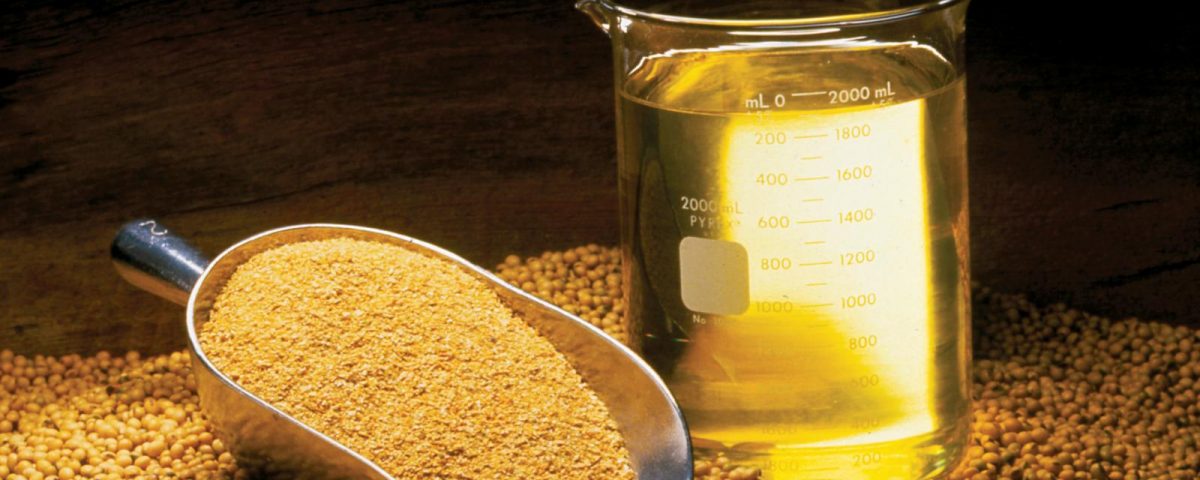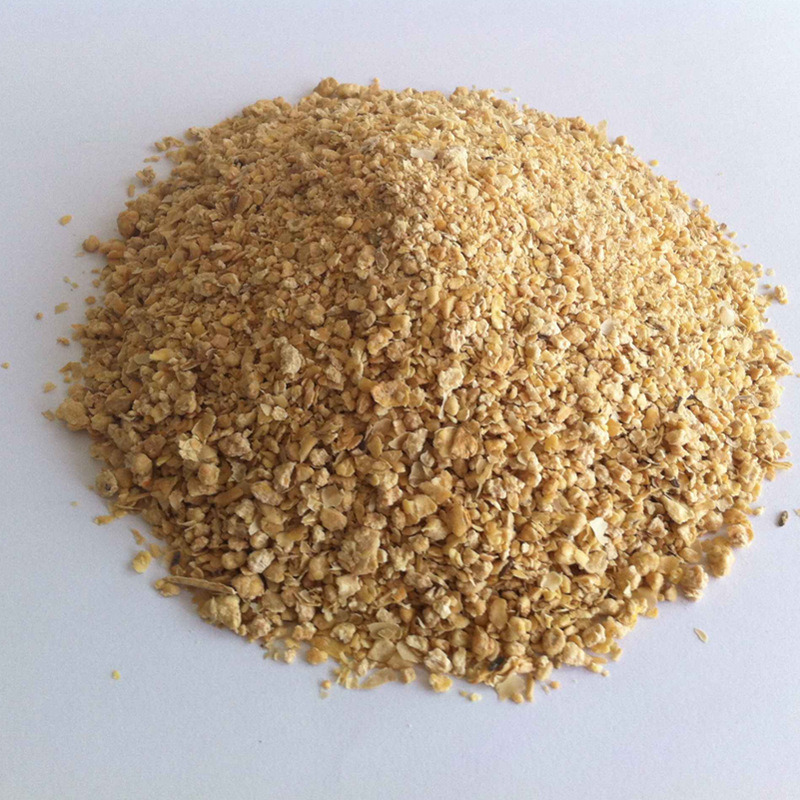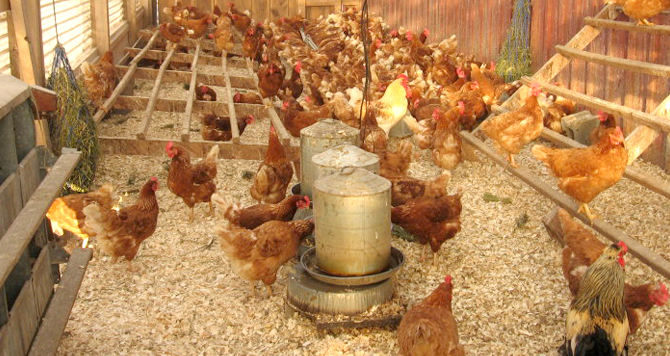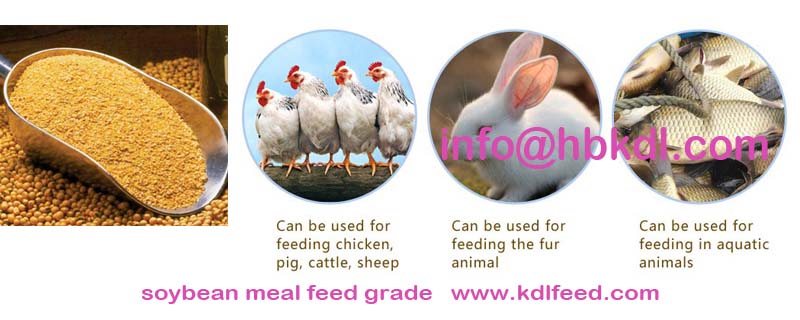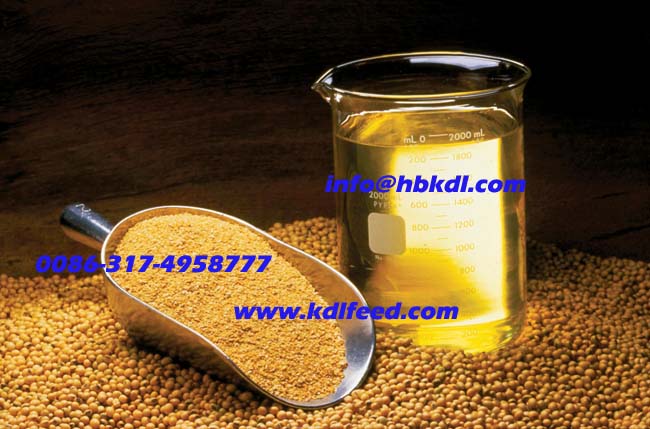Soybean Meal Animal Feed , Organic , animal protein,Non-GMO

Betaine Hcl 98%-poultry feed additive
October 18, 2016
100% natural feed grade Garlic extract Allicin powder 25%
October 20, 2016Soybean meal is the most crucial protein source used to feed farm animals. It represents two-thirds of the total world output of protein feedstuffs, including all other significant oil meals and fish meal (Oil World, 2010).
Biocon SOYBEAN MEAL SPECIFICATIONS:
| Protein | 46% min |
| Fat | 2% |
| Moisture | 10% max |
| Ash | 6% |
| Acid insolubles | 0.3% max |
| Broken pellets and or meal acceptable | Upto 80% |
| TVBN | 50mg/100 gms max |
| Fiber | 6% max |
| Aflatoxin | 20 ppb max |
| Total count | 5* 10^5 max |
| Salmonella | Absent in 25 gms |
| Mould colong | 5*10^5 max |
| E.coli | Absent in 0.1 gms |
Speciality:
The range of soyabean meal we offer is likewise very rich in protein and is provided different bundle sizes at really sensible rate.
Soyabean meal is typically the classification assigned to the item that is assigned to the item that is obtained as a result of solvent Extraction of soyabeans.
This item is usually segregated and sold inning accordance with its protein content.
If the product is acquired through mechanical pressing, then it is called Soya Expelled Cake.
Animal feed ingredientssuch as Soyabean Meal, Rapeseed Meal, Rice Bran Extraction Meal, Corn Gluten Meal, Di-Calcium PHosphate, Fish meal, etc for livestocks feeding, chicken feeding, pig feeding, horse feeding, etc
. We are regularly exporting these animal feed ingredients to Far East Asian countries like Vietnam, Malaysia, Taiwan, Korea, and so on. Middle East like Dubai, Kuwait, Saudi Arabia etc and African nations like Kenya Tanzania and so on
.
Description:
China is the Fifth largest manufacturer of soyabean in the world producing around 10 million lots of soyabean every year. China soyabean meal is N0n GMO item, excellent source of Lysine, Triyptophan and Threonini for poultry feed and is the largest veggie protein available in the world. Argentina is the largest exporter of soyabean meal.
Soyabean meal offered by us is widely used for making animal feed. Owing to the high protein material, our soya meal is used to add protein in the diet plan of cattle and other animals.
Soyabeans are a crucial worldwide crop supplying oil and protein.
Soyabean extraction meal consists of residues occurring from oil extraction from soyabeans performed using by extraction solvent. It is primarily produced in Madhyapradesh, Maharashtra, Rajasthan, Karnataka, Uttarpradesh, Andrapradesh, Nagaland, Gujarat, etc
. Soyabean is the most used vegetable protein feed as an animal feed active ingredient. Soyabean is sent out for crushing to get oil and cake which is further sent to extraction for removal of recurring oil and to obtain its meal. Soyabean meal is thought about premium to other meals due to high protein content. The Indian soyabean extraction has a high pro-fat material (49 % – 50 %) compared with a 44 – 48 % pro-fat content of China and American countries and is effectively accepted in the global market. South East Asia, (Vietnam, Thailand, Indonesia, Phillipines, Singapore and Malaysia, etc.).
Soybean meal is the by-product of the extraction of soybean oil. In the mechanical procedure, the soybeans are split, dried, heated and fed to a mechanical press, and the resulting flakes are dried and ground. There are many variations of these procedures, especially treatments that enhance the rumen by-pass protein worth of the meal for ruminants, including mixes of heating, mechanical treatments and chemical treatments.
Soybean meal, heat processed whole soybeans, and soybean hulls are the significant soybean products used for feeding dairy cows. They have a nutrient content that is complementary to cereal grains such as corn, that makes this an outstanding combination of feeds for dairy cows.
Sheep.
Just like cattle, there have actually been numerous efforts at replacing soybean meal in sheep diet plans with locally offered and more economical protein sources. Recently, products as varied as sunflower meal (Irshaid et al., 2003), linseed (Giannico et al., 2009), bitter vetch (Haddad, 2006), pongam cake (Soren et al., 2009), banana trunks (Mathius et al., 2001) and fish meal (Aimone et al., 1996; Urbaniak, 1995) have actually been successfully tested from an economic perspective. Soybean meal, compared to energy sources such as maize or barley grains in late pregnancy or early lactation ewes, offered the very same efficiency in animals fed low quality hay as a basal diet (Hill et al., 1995).
Goats.
In goats, including 1.6% urea to a soybean meal-based diet plan permitted a decrease of soybean meal by 12% (from 25% to 13% addition level) resulting in lower feed costs (Costa et al., 2009). In countries where such a practice is permitted, soybean meal can likewise be changed by meat offals or poultry meal without altering animal performances (Oyeyemi et al., 2006; Sanchez Estrada et al., 2002).
Pigs.
Soybean meal is the preferred source of protein in pig diets due to its material of highly absorbable necessary amino acids (lysine, but also threonine, tryptophan and isoleucine). It is a great enhance to cereals that contain lower levels of those amino acids but greater levels of the sulphur-containing amino acids, particularly methionine, that are restricting in soybean meal. Cereal/soybean meal-based diet plans are therefore common in pig farms located in nations where soybean meal is economical (Pettigrew et al., 2008). Soybean meal can feed all classes of pigs and the inclusion levels generally utilized have to do with 30% in growing, ending up pigs and plants, and slightly lower (20-25%) in piglets (Ewing, 1997). Freshly weaned pigs prefer dried milk products (whey or skim milk) as a protein source (Patience et al., 1995).
Dehulled soybean meal is approximately greater in energy by 5% and in lysine by 10 to 15% (Patience et al., 1995). It showed to have a better feed conversion ratio and to sustain higher animal performance than non-dehulled soybean meal from beginners to completing pigs (Swick, 1997).
Poultry.
Soybean meal is a major source of protein for all kinds of poultry, due to the quantity and quality of its protein and amino acids. A diet plan based on maize and soybean meal supplies an excellent balance of all necessary amino-acids except methionine, but this problem can be fixed by the inclusion of synthetic methionine (Waldroup et al., 2008). Soybean meal inclusion levels vary from 25% in chicks to 30-40% in broilers, breeders and laying hens (Willis, 2003; McDonald et al., 2002; Ewing, 1997).
Other plant protein sources can partially and absolutely replace soybean meal in poultry rations, such as cottonseed meal, groundnut meal, sunflower meal and palm kernel meal, supplied that they are utilized in combination with lysine supplements. Antinutritional elements and other prospective issues may restrict the usage of these alternative protein sources (Elkin, 2002).
Rabbits.
Toasted soybean meal is a referral feedstuff for rabbits, and it is generally included at a 15-20% level in their diet plans (Lebas, 2004). Cottonseed meal might completely change soybean meal in growing rabbits (Davila et al., 2007).
50% replacement of soybean meal by Nigella sativa cake has actually been proposed in diet plans for weanling bunnies (Amber et al., 2001).
In diets for growing rabbits 50% replacement by radish seed meal, rocket seed meal or cumin seed meal (El-Tohamy et al., 2007), and hydrolyzed cattle conceal scrap meal (Furlan et al., 1997) have been proposed.
For pregnant and lactating does 50% linseed meal (Amber, 2002), and 25 to 50% sunflower meal might replace soybean meal (Amber et al., 2007).
Fish.
Because of its global availability and expense, soybean meal is potentially thought about as the most significant protein source as an option to fish meal (Brown et al., 2008). The most frequently utilized items in aquaculture are toasted soybean meals. Depending upon schedule, dehulled and non-dehulled soybean meals are utilized, as well as unground soybean cakes in a number of tropical and/or developing nations.
The general restrictions with regard to the use of soybean products to aquatic animals are due to the fairly high carbohydrate, low crude fat and unrefined protein levels and the lower levels of sulphur-containing amino acids compared to that found in fish meal. Phytic phosphorus is not offered to fish, as well as interfers with the absorption of other micronutrients. The existence of antinutritional elements present in the seeds is likewise a matter of concern, though these need to be ruined in toasted soybean meal.
Soybean meal is highly tasty to a lot of warm water fish (Lowell, 1998; Akiyama, 1991). In different species of salmonids, partial replacement of fish meal by soybean items has been demonstrated (Kaushik, 2008). A frequently observed unfavorable impact with soybean items in the feeds for Atlantic salmon is related to enteritis (Baeverfjord et al., 1996; Bakke-McKellep et al., 2007), the specific reason for which has so far not been identified.
Crustaceans.
Prawns and shrimps.
Soybean meal has been utilized to feed marine shrimp given that the 1980s (Akiyama, 1991). By correct feed formulation utilizing soybean meal together with other plant protein sources, it was possible to establish a “fish meal totally free” diet plan for raising marine shrimp under pond culture conditions (Amaya et al., 2008). Fish meal can be totally replaced with soybean meal and distillers’ by-products in the feeds for freshwater prawns (Tidwell et al., 1993).
Crabs.
In the mud crab types Scylla paramamosain, soybean meal included at 30% in the diet had the highest digestibility of Protein, energy and dm, and was a much better ingredient than maize flour, rice bran and cassava meal (Phuong Ha Truong et al., 2009).
source: www.feedipedia.org/node/674


